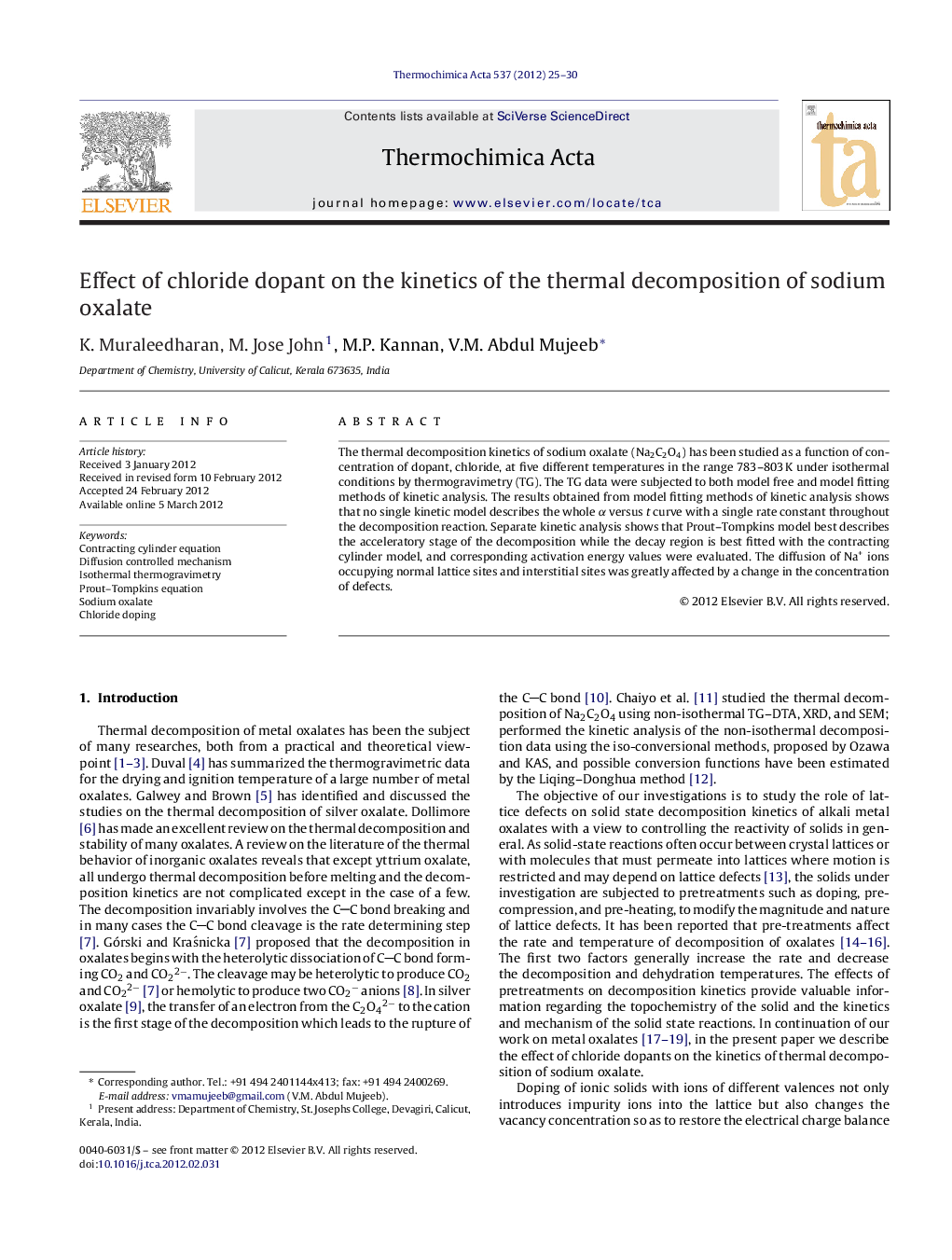| Article ID | Journal | Published Year | Pages | File Type |
|---|---|---|---|---|
| 674172 | Thermochimica Acta | 2012 | 6 Pages |
The thermal decomposition kinetics of sodium oxalate (Na2C2O4) has been studied as a function of concentration of dopant, chloride, at five different temperatures in the range 783–803 K under isothermal conditions by thermogravimetry (TG). The TG data were subjected to both model free and model fitting methods of kinetic analysis. The results obtained from model fitting methods of kinetic analysis shows that no single kinetic model describes the whole α versus t curve with a single rate constant throughout the decomposition reaction. Separate kinetic analysis shows that Prout–Tompkins model best describes the acceleratory stage of the decomposition while the decay region is best fitted with the contracting cylinder model, and corresponding activation energy values were evaluated. The diffusion of Na+ ions occupying normal lattice sites and interstitial sites was greatly affected by a change in the concentration of defects.
► Studies on the isothermal decomposition kinetics of Na2C2O4 in the range 783–803 K by TG. ► Effect of chloride dopant on the kinetics of thermal decomposition. ► Acceleratory and decay stages of the thermal decomposition follows different reaction models. ► Rate of decomposition is dependent on dopant concentration. ► Diffusion controlled mechanism is suggested for the thermal decomposition.
